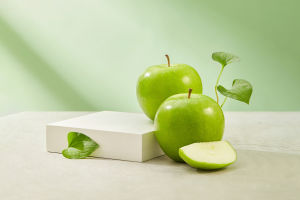Dear Lykkers! Ever wondered why peaches are covered in that soft, fuzzy hair?
While some might find it annoying, that fuzzy layer actually plays an important role in protecting this delicious fruit. Let's dive into why peaches grow hair and what it does for them.
The Protective Role of Peach Fuzz
The soft fuzz on a peach isn't just for aesthetics; it's there to safeguard the fruit. The hair acts as a natural defense mechanism, helping the peach fend off insects and pests. Since peaches have delicate skin, the fuzz creates a barrier that prevents small insects from easily penetrating the fruit's surface. Without this protection, the fruit would be more vulnerable to pests, which could cause damage before the peach has fully ripened.
Additionally, the fuzzy coating helps shield the peach from the elements. It minimizes the impact of water and moisture, reducing the risk of mold and rot. Think of it as the peach's built-in protective shield, allowing it to thrive in various weather conditions.
How to Remove Peach Fuzz
While the fuzz is helpful for the peach, some people prefer a smoother texture when eating the fruit. Luckily, removing peach fuzz is a simple process. Here are a few easy methods:
1. Baking Soda Soak
Fill a bowl with water and add a teaspoon of baking soda.
Let the peaches soak for about five minutes.
The fuzz will start to loosen and can be easily rinsed off with water. Baking soda’s alkaline nature helps break down the fine hairs on the peach.
2. Salt Scrub
Wet the peach and sprinkle a small amount of salt on the skin.
Gently rub the peach with your hands to remove the fuzz.
Rinse thoroughly with water. The salt exfoliates the surface, making it easy to remove the hair.
3. Boiling Water Method
Score a small "X" on the bottom of the peach.
Boil the peach for about 30 seconds, then immediately transfer it to a bowl of ice water.
The peach skin, along with the fuzz, will easily peel off. This method is ideal when you want a fuzz-free peach without losing any of its juicy goodness.
Why Some Peaches Are Fuzzier Than Others
Not all peaches have the same amount of fuzz. Varieties like clingstone and freestone peaches can differ in their level of hairiness. This variation depends on the environment in which the peach is grown. For instance, peaches grown in humid areas might have more fuzz to combat the increased moisture, while those grown in drier climates may have less.
In contrast, nectarines—another variety of the same species—are smooth-skinned because they lack the gene responsible for fuzz. Nectarines are often mistaken for a separate fruit, but they are essentially peaches with smooth skin, offering the same sweet taste without the protective fuzz.
Selecting the Perfect Peach
When picking peaches at the market, the fuzz can actually help you determine the ripeness of the fruit. A ripe peach will have soft, even fuzz and should feel slightly firm but give a little when pressed. Avoid peaches with overly dry or brittle fuzz, as this can indicate the fruit is past its prime.
Additionally, look for peaches with a fragrant smell. The fuzz doesn't block the wonderful aroma that ripening peaches produce, making scent another reliable indicator of ripeness.
Peaches: What's the Fuzz About?
Video by TRUE FOOD TV
The Benefits of Peach Fuzz
While some might be quick to remove it, peach fuzz can also have benefits when consumed. The fuzzy skin is packed with fiber, which aids in digestion and supports overall gut health. By eating the peach with the skin on, you're getting a boost of nutrients like antioxidants and vitamins, making it a healthier choice.
Next time you bite into a peach, remember that its fuzzy skin is there for a reason—keeping bugs at bay and protecting that juicy goodness inside. Whether you like to keep the fuzz or smooth things out, peaches remain one of the sweetest joys of summer. Do your own tips or favorite peach recipes? Drop them in the comments and let's keep sharing the peach love!


